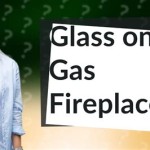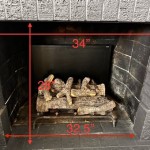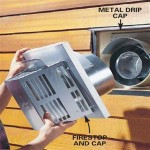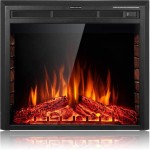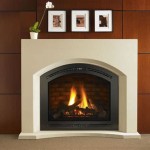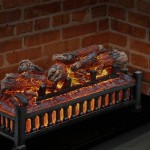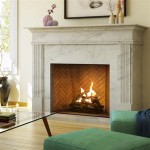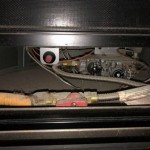Lighting Your Gas Fireplace: A Step-by-Step Guide
Gas fireplaces offer a convenient and efficient alternative to traditional wood-burning fireplaces. They provide instant warmth and ambiance with minimal effort and maintenance. However, knowing how to properly light a gas fireplace is crucial for both safety and optimal performance. This article provides a comprehensive guide to safely and effectively lighting your gas fireplace.
Before initiating the lighting process, ensure you have consulted the manufacturer's instructions for your specific fireplace model. While the general principles remain consistent, slight variations may exist depending on the design and features of your particular unit. Adhering to the manufacturer's guidelines is paramount for safe operation and preventing potential damage or malfunctions.
Furthermore, a thorough inspection of the fireplace and surrounding area should be conducted. Check for any obstructions, such as debris or flammable materials, near the fireplace opening. Clear the area to ensure a safe and unimpeded ignition process. Examine the gas supply lines and connections for any signs of leaks or damage. If any irregularities are detected, immediately contact a qualified professional for inspection and repair before attempting to light the fireplace.
Identifying Your Fireplace Type: Standing Pilot vs. Electronic Ignition
Gas fireplaces typically fall into one of two categories: those with a standing pilot light and those with electronic ignition. Understanding which type you have is essential for correctly lighting the fireplace. A standing pilot light system has a small, continuously burning flame that ignites the main burner when needed. An electronic ignition system, on the other hand, uses an electric spark to ignite the gas, eliminating the need for a constantly burning pilot light.
To determine which system your fireplace utilizes, visually inspect the area around the burner. If you see a small flame burning constantly, even when the fireplace is not in use, you have a standing pilot light system. If no flame is visible, your fireplace likely has an electronic ignition system. Refer to your fireplace's manual if you are unsure.
The method for lighting each type differs. Standing pilot systems require manually lighting the pilot light, while electronic ignition systems typically ignite with the flip of a switch or the press of a button. Understanding these differences prevents confusion and ensures the fireplace is lit correctly.
Lighting a Gas Fireplace with a Standing Pilot Light
Lighting a gas fireplace with a standing pilot light requires a specific sequence of steps to ensure safe and reliable ignition. Start by locating the gas control valve, typically found behind a panel or access door near the base of the fireplace. The valve will have settings such as "OFF," "PILOT," and "ON."
Turn the gas control valve to the "OFF" position and wait for several minutes to allow any accumulated gas to dissipate. This waiting period is crucial for safety, as it prevents a potential buildup of flammable gas that could lead to a dangerous flare-up when attempting to light the pilot.
After the waiting period, turn the gas control valve to the "PILOT" position. Simultaneously, press and hold down the pilot button, which is usually located near the gas control valve. While holding the pilot button down, use a long-stemmed lighter or match to ignite the pilot light. The pilot light is located near the thermocouple, a small metal rod next to the pilot flame.
Continue holding the pilot button down for approximately 20-30 seconds after the pilot light ignites. This allows the thermocouple to heat up and activate the gas valve, keeping the pilot light lit. If the pilot light goes out when you release the pilot button, repeat the process, ensuring that the pilot button is held down for the full duration.
Once the pilot light remains lit after releasing the pilot button, turn the gas control valve to the "ON" position. The main burner should now ignite, providing heat and ambiance. If the main burner does not ignite, consult the troubleshooting section of your fireplace's manual.
Lighting a Gas Fireplace with Electronic Ignition
Lighting a gas fireplace with electronic ignition is typically simpler than lighting one with a standing pilot light. Most electronic ignition systems are controlled by a switch, button, or remote control. The specific method may vary slightly depending on the model, so consulting the manufacturer's instructions is recommended.
Ensure the gas supply is turned on. The main gas valve is usually located near the fireplace, often behind an access panel. If the gas valve is off, turn it on to allow gas to flow to the fireplace.
Locate the ignition switch, button, or remote control for your fireplace. Activate the ignition system according to the manufacturer's instructions. This usually involves flipping a switch to the "ON" position or pressing a button on a remote control. The electronic igniter will then generate a spark to ignite the gas burner.
If the burner does not ignite immediately, wait a few seconds and try again. Some electronic ignition systems may require a few attempts to ignite the gas. If the burner still fails to ignite after several attempts, consult the troubleshooting section of your fireplace's manual or contact a qualified technician.
Once the burner ignites, observe the flame for proper operation. The flame should be stable and blue, with minimal yellow or orange flickering. An irregular or unstable flame may indicate issues with gas pressure, burner cleanliness, or other mechanical problems. If you observe any irregularities, contact a qualified technician for inspection and repair.
Understanding the type of gas fireplace you have and following the correct lighting procedure ensures safe and efficient operation. Regular maintenance, including cleaning the burner and checking for gas leaks, further enhances the longevity and safety of your gas fireplace.

How To Light A Gas Fireplace

How To Light A Gas Fireplace Homeserve Usa

3 Ways To Light A Gas Fireplace Wikihow

Is It Safe To Keep The Pilot Light On Gas Fireplace Elegant Fireside

Starting A Gas Fireplace Raleigh Nc Chimneys Plus

How To Light A Gas Fireplace Via Control Panel Key And Remote

How To Fix A Pilot Light In Your Gas Fireplace Vertical Chimney Care

How To Light The Pilot On A Gas Fireplace

How To Light A Gas Fireplace Homeserve Usa

Is It Okay To Leave A Pilot Light On For Gas Fireplace
Related Posts

